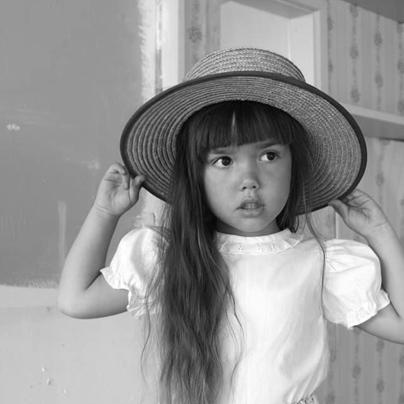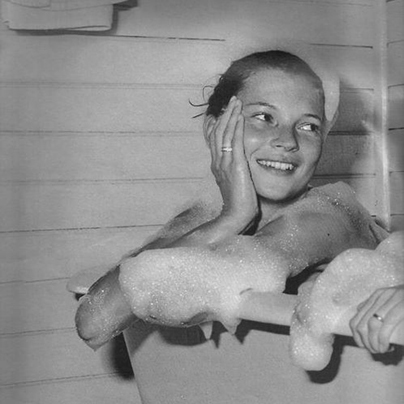Soul-searching: Advent Calendar Round up III
After three weeks of winter-proofing, outfit-planning and reflecting our little Advent calendar is in its final stages. For one last time, scroll down for a round up of all daily tips that were sent out in the past week.
If you have signed up to receive the Advent calendar via email or on Facebook, you can expect a few more holiday-/end-of-year-themed goodies until the 24th, but since this is the last weekly round up here on the blog I just wanted to tell you how much I have enjoyed this whole process, all of your lovely comments, feedback and emails. You guys have given me a ton of post ideas for the new year - expect to see lots of them live on the blog during January/February!
Day 15 | Motivation
After two weeks of hands-on wardrobe planning you deserve a little break from styling, structuring and brainstorming, don’t you think? The third week of the INTO MIND Advent calendar will invite you to dig a little deeper and reflect on what role personal style plays in your life. What does fashion mean to you, what are your strengths and weaknesses when it comes to expressing your style and building your wardrobe and who or what influences you?
This Sunday, spend some time thinking about the 'why'. Why do you spend any time on your style at all? Why do you read fashion magazines, why do you read blogs? Do you use fashion as a creative outlet? As an expression of your personality/ aesthetic ideals/ culture? Does dressing well give you confidence? Are you motivated by the practical benefits of a refined wardrobe, e.g. to simplify your daily routine? All of the above?
Your ‘why’, i.e. your main motivation for refining your style will tell you what aspect of your wardrobe and personal style to focus on. For example, if you see fashion as a creative outlet, you might want to spend more time defining your style than building a functional wardrobe structure. On the other hand, if you view your style mainly from a practical point of view, you will probably want to concentrate on structuring and organising your wardrobe, and so on.
Further Reading
Simple Living vs Calvin Klein: Defining the Minimalist Approach
(image via Vanity Fair Italia)
Day 16 | One-day Minimalism
You don’t know what you have until it’s gone. To further discover what exactly it is about personal style and fashion that you are drawn to, practice minimalism for one day this week. For a single day, strip your routine of everything related to style, beauty and fashion. Wear no make up and only super basic, functional clothes with no aesthetic value. Then observe how you feel. Bored, plain, stressed, unattractive? Or relaxed and liberated? What exactly do you miss about wearing your regular clothes? The confidence they give you or the fun and the creative challenge of putting outfits together? Also observe what you don’t miss: the extra 30 minutes to get ready or wearing uncomfortable heels for example. How different is your day without style from your usual everyday life? Write lots of notes about your experience and see if you can draw any conclusions from it, for example about your true essentials as opposed to things you thought you need, but are actually fine without.
Further Reading
A minimalist beauty experiment
(image by Travis Jensen)
Day 17 | Style Evolution
Our aesthetic ideals, including our preferences for certain colours, textures, styles and details, often form during childhood. Spend some time today to write a short history of your own personal style, from as early as you can remember until today. Write about and analyze not only what you wore, but also why you wore it and how you felt. What was your overall style like, what were your favourite outfits and go-to colour ensembles? And: How happy were you with your look at each stage? What elements (specific items, colours, patterns, etc) have you stuck to over the years, which aspects about your look did a complete 180? Are there any long forgotten favourites that you could reincorporate into your current wardrobe? Can you spot a relationship between your overall mindset at a certain stage of your life and your style at the time? Are you now more or less interested in fashion than 1, 5 or 10 years ago?
Further Reading
Style Profile: Joy's Style Evolution
(image via Frida and Fauna)
Day 18 | Confidence
Confidence has a huge influence on every aspect of your personal style. At least to some extent we all rely on our clothes to give us confidence. Confidence for a job interview, a date or even just everyday stuff. It works both ways though: Fashion can give you confidence but at the same time you need confidence to truly be able to refine your own personal style. You need confidence to express your aesthetic ideals, regardless of whether they match current trends. You need confidence to examine yourself honestly and figure out what suits you and what doesn’t. You need confidence to try out new things and to listen to your own gut feeling, instead of needing the approval of someone else.
To what extent do you rely on clothes and make up to give you confidence. Do you dress differently when you feel down or extra happy? Would you like to be more confident when it comes to your own style?
(image by Bruce Weber for W Magazine)
Day 19 | Influencers
From the shows that we watch and the magazines we read to the opinions we hear - all of these things can shape and inspire our own preferences and thereby our personal style. Today, spend some time thinking about the factors that have the biggest influence on what you perceive as stylish or ‘your style’. Movies, art, pop culture, street style, friends, your co-workers, celebrities, music, vintage drawings, your grandmother, nature. Make a list of all the sources you draw your inspiration from. Then ask yourself: are you happy with the amount of influence either of these sources have on your confidence, your style and what you think looks good?
When it comes to personal style, influencers can have both a positive and a negative effect. Inspiration is good and essential for refining your own sense of aesthetics but there is a fine line between being inspired and letting someone else’s style and opinion cloud or even dictate your own.
(image via Fred Baby)
Day 20 | Strengths
Because defining your personal style is such a multifaceted task, you need to develop quite a varied skill set, from having a great eye for visual details to being super practical when it comes to stocking your wardrobe. Some of you might be naturally creative but need more time to figure out the functional aspects of style, others might be more analytical and have an easier time organizing their wardrobe than creating a style concept. Whichever aspect of wardrobe building you are good or bad at, the important thing is to become aware of both your own and your wardrobe’s strengths and weaknesses, so you’ll know what to emphasize or work on.
Today, take 15 minutes to write down everything about styling and wardrobe building that comes easy to you, that you are good at or even proud of. Do you have an eye for colour? Or a knack for building lots of outfits from a small number of items? Next, think about which aspects of your wardrobe and personal style you are super happy with. Your signature look? Or maybe your well-organized and versatile shoe collection? Write everything down and then give yourself a pat on the back.
(image by Thomas Whiteside for Elle US)
Day 21 | Weak Points
Your wardrobe is more than the sum of its parts: Everything from its overall concept to how you organize your closet should work in unison to express your personal style. Task for today: Review your wardrobe from top to bottom and write down every component you are not yet happy with, e.g. its versatility, outerwear section or colour palette. Then analyze your own skill set: what wardrobe building/styling tasks do you find trickier than others, e.g. accessorizing, structuring your wardrobe, choosing proportions for your body shape, etc.
As a second step, ask yourself which of these components and skills you want to improve and which you can accept. For example, if you are not great at building special occasion looks but only go out to special events a few times a year, the energy and time you would need to improve could be put to much better use elsewhere, e.g. to work on your everyday or work wardrobe. On the other hand: A closet full of clothes that you don’t like is a problem you can’t ignore. Write down at least a few first steps for each skill or aspect of your wardrobe you want to improve.
(image: Jane Fonda for Life Magazine, 1961)






